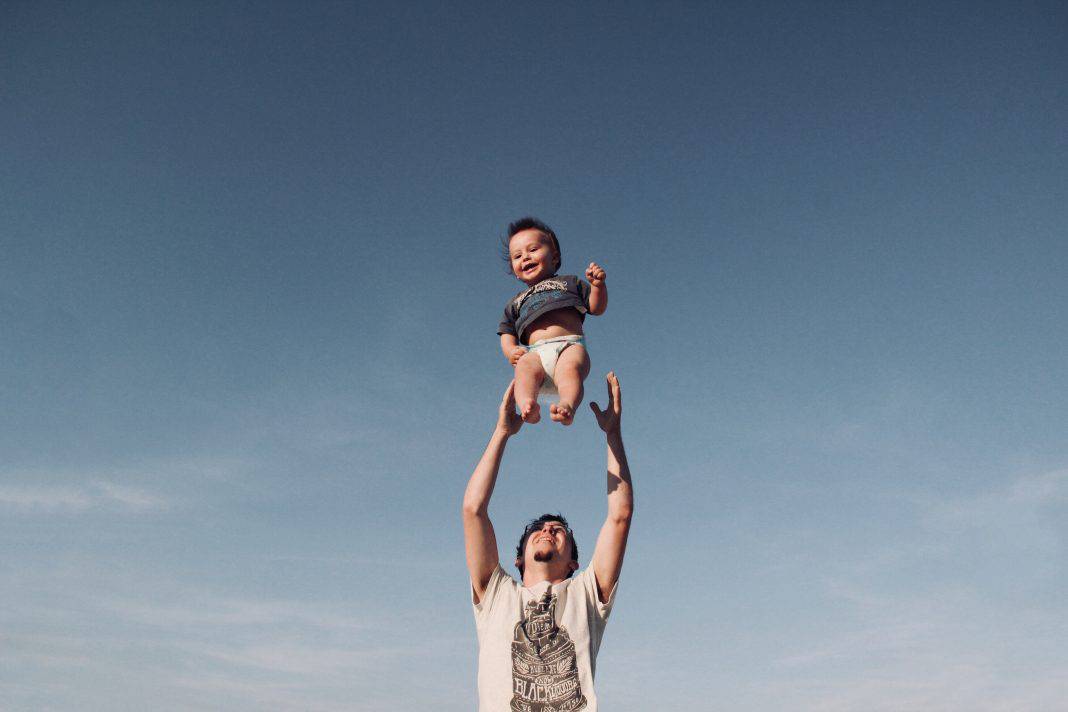In 2012, actor Alicia Silverstone made headlines when she released a video of herself feeding her infant son. The video revealed that she likes to chew her son’s food up before feeding it to him, much like a bird would feed its hatchlings.
It goes without saying that people were shocked. But for Silverstone, there was nothing strange about it. She claimed that it was a “weaning process” and that she certainly wasn’t the first parent to do so. The public’s outraged response might suggest that her mealtime ritual isn’t quite the time-honored tradition she claims it is. But it does raise an important question: Is the shocked reaction to such techniques really warranted? Much like unconventional baby names, there’s been an undeniable rise in the popularity of alternative parenting methods in recent years. And when it comes to other people’s parenting choices, it can often feel like everyone’s a critic. Take a look at some of the most controversial modern parenting techniques and decide for yourself.
1. Gender-Neutral Parenting
Gender is one of the most hotly debated topics right now. More and more people are feeling comfortable openly identifying with a gender other than the one they were assigned at birth or even rejecting the gender binary entirely. It’s a pretty big sociological shakeup, and not all of society is on board with this new dynamic. Considering this, it’s not hard to see why there’s been such a backlash against raising a child without the notion of gender. The traditional method of childrearing places a heavy emphasis on gender. Gender-appropriate names, clothing, and even toys all play a role in a many children’s upbringing.  Advocates of gender-neutral parenting would argue that this is assigning a child a gender identity at birth instead of allowing them to identify as what feels natural to them. It also prevents children from engaging in interests that are traditional to a gender other than their own. With gender-neutral parenting, children can enjoy whatever clothing, hairstyle, toys, or games they want without feeling pressured or shamed for their choices. Basically, they’re given the freedom to express themselves however they choose. Gender politics is a highly controversial subject. Rejecting the gender binary is rejecting the status quo, which is bound to ruffle a few feathers. Parents who use this method are sometimes accused of pushing their agenda onto their children.
Advocates of gender-neutral parenting would argue that this is assigning a child a gender identity at birth instead of allowing them to identify as what feels natural to them. It also prevents children from engaging in interests that are traditional to a gender other than their own. With gender-neutral parenting, children can enjoy whatever clothing, hairstyle, toys, or games they want without feeling pressured or shamed for their choices. Basically, they’re given the freedom to express themselves however they choose. Gender politics is a highly controversial subject. Rejecting the gender binary is rejecting the status quo, which is bound to ruffle a few feathers. Parents who use this method are sometimes accused of pushing their agenda onto their children.  Some people, such as sexual neuroscientist Debra W. Soh, argue that attempts to raise children gender-neutral are pointless, as they’re still likely to pursue gender-typical interests. Nevertheless, it’s a far cry from abuse—despite what some might claim.
Some people, such as sexual neuroscientist Debra W. Soh, argue that attempts to raise children gender-neutral are pointless, as they’re still likely to pursue gender-typical interests. Nevertheless, it’s a far cry from abuse—despite what some might claim.
2. Attachment Parenting
Another celebrity who’s often making headlines for her parenting choices is The Big Bang Theory star Mayim Bialik. She’s a big fan of attachment parenting, a topic that she discusses often in interviews. Attachment parenting aims to deepen the bond between mother and child. This is done with babywearing, extended breastfeeding, and co-sleeping.
Bialik breastfed one of her sons until he was 4 years old—something she faced a lot of backlash for. Although some find attachment parenting amazing, others aren’t so convinced. For example, Barbara M. Ostfeld, PhD, a professor of pediatrics at Rutgers Robert Wood Johnson Medical School, recently held a Reddit AMA about the risk factors associated with bed-sharing. In the discussion, she explained that “with respect to bed-sharing, the [American Academy of Pediatrics] notes that it is especially risky and to be avoided under several conditions such as sleeping with a term infant under 4 months of age.” Laura Paret, PhD, is a child and adolescent psychologist who works with children, adolescents, and their families to treat a range of behavioral challenges at Union Square Practice in New York City. “Attachment theory, in my opinion, has the strongest research basis for explaining how parent–child relationships later impact children as adults,” she says. Paret works with parents in coaching them to “adopt an authoritative parenting style, drawing from Baumrind’s seminal work on the topic,” a theory that bears similarity to attachment parenting. “Essentially both theories highlight the need for children to have warm, empathic connection—i.e. a ‘safe haven’ of comfort and security, from an attachment perspective—and encouragement to take on challenges and explore the world within firm limits set by the parents—i.e. a ‘secure base’ from which children can explore their worlds but also understanding behavioral expectations and boundaries the parents hold,” Paret says.  She focuses on “optimizing the relationship connection” by helping parents learn how to give attention and praise during play and quality time. Paret says that this form of “affirmation coaching” helps promote both emotional literacy and intelligence in children, which in turn encourages their ability to solve problems independently while nurturing their self-esteem. “Special play time and other relationship-building strategies can quickly increase the sense of safety and attachment within the parent–child relationship, at which point approaches that follow from an ‘authoritative’ parenting style come next, such as behavioral-modification strategies like limit setting, natural and logical consequences, selective attention, and rewards/incentives,” she says. “Research shows that on the whole, these approaches translate into children’s improved ability to be self-reliant [and] emotionally intelligent [and have] stronger peer relationships and academic performance and [improved] relationship quality throughout the life span.” Filmmaker Jacqui Blue is a producer best known for the documentary Beautiful Births. She’s an advocate for more holistic parenting methods and has spent almost a decade studying pregnancy and childbirth. She also happens to be a single mom of five boys ages 9 to 14. Blue is a big fan of attachment-parenting methods and implemented them with her own children.
She focuses on “optimizing the relationship connection” by helping parents learn how to give attention and praise during play and quality time. Paret says that this form of “affirmation coaching” helps promote both emotional literacy and intelligence in children, which in turn encourages their ability to solve problems independently while nurturing their self-esteem. “Special play time and other relationship-building strategies can quickly increase the sense of safety and attachment within the parent–child relationship, at which point approaches that follow from an ‘authoritative’ parenting style come next, such as behavioral-modification strategies like limit setting, natural and logical consequences, selective attention, and rewards/incentives,” she says. “Research shows that on the whole, these approaches translate into children’s improved ability to be self-reliant [and] emotionally intelligent [and have] stronger peer relationships and academic performance and [improved] relationship quality throughout the life span.” Filmmaker Jacqui Blue is a producer best known for the documentary Beautiful Births. She’s an advocate for more holistic parenting methods and has spent almost a decade studying pregnancy and childbirth. She also happens to be a single mom of five boys ages 9 to 14. Blue is a big fan of attachment-parenting methods and implemented them with her own children.  “When my kids were younger my parenting style included breastfeeding (extended), co-sleeping, babywearing, and we danced to the Wiggles all the time.” Blue says she has seen co-sleeping not be ideal for some parents, whose children refuse to sleep in their own bed up to the age of 12. Nevertheless, her experience was a positive one. “While my kids were nursing and not sleeping through the night, co-sleeping made life so much easier,” she says. “In addition to emotional bonds, mother and child have physiological responses to one another, which is really quite fascinating.” She says that although she and her family work well together as a team, “personal independence” is highly encouraged. “Personal responsibility, boundaries, and respect are big deals in my home and things I wish our society overall would learn how to implement,” she says.
“When my kids were younger my parenting style included breastfeeding (extended), co-sleeping, babywearing, and we danced to the Wiggles all the time.” Blue says she has seen co-sleeping not be ideal for some parents, whose children refuse to sleep in their own bed up to the age of 12. Nevertheless, her experience was a positive one. “While my kids were nursing and not sleeping through the night, co-sleeping made life so much easier,” she says. “In addition to emotional bonds, mother and child have physiological responses to one another, which is really quite fascinating.” She says that although she and her family work well together as a team, “personal independence” is highly encouraged. “Personal responsibility, boundaries, and respect are big deals in my home and things I wish our society overall would learn how to implement,” she says.
3. Gentle Parenting
Similar to attachment parenting, gentle parenting doesn’t use rewards or punishment when teaching children what’s wrong and right. Parents who raise their children with gentle parenting techniques will avoid saying words like “no” or “don’t” and aren’t fans of rewarding good behavior with what could be interpreted as a bribe (“I’ll give you a piece of candy if you clean your room!”)  This method is supposed to help children think about their actions on a deeper level rather than blindly obeying their parents because of an expected reaction. In theory, they’ll learn to be respectful and compassionate but also not feel scared of their parents’ reactions to their behavior. Of course, a lot of parents would balk at the idea of never telling their kid “no” or allowing them to discuss every parenting decision. After all, they’re going to be hearing the word “no” a lot when they leave the nest.
This method is supposed to help children think about their actions on a deeper level rather than blindly obeying their parents because of an expected reaction. In theory, they’ll learn to be respectful and compassionate but also not feel scared of their parents’ reactions to their behavior. Of course, a lot of parents would balk at the idea of never telling their kid “no” or allowing them to discuss every parenting decision. After all, they’re going to be hearing the word “no” a lot when they leave the nest.
4. Involving Children in Childbirth
If you have younger siblings, your earliest memory of them is probably when they were brought home from the hospital. But some parents are now having all their kids present for the birth of their new siblings, allowing them to welcome the new addition to the family as soon as they take their first breath. Seeing someone give birth is a pretty intense experience, which is exactly why not everyone thinks it’s appropriate for kids to be in the room. There are fears that it might be too stressful for a young child to understand.  For parents who do include their kids in the birth, it’s important to prepare them for what’s about to happen, especially if they’re young. That way they’ll feel less confused about seeing their mother in so much pain. The University of Michigan’s CS Mott Children’s Hospital has some ideas for involving older siblings in the birth of a new baby, suggesting that they may even like to cut the cord to feel really involved in the process.
For parents who do include their kids in the birth, it’s important to prepare them for what’s about to happen, especially if they’re young. That way they’ll feel less confused about seeing their mother in so much pain. The University of Michigan’s CS Mott Children’s Hospital has some ideas for involving older siblings in the birth of a new baby, suggesting that they may even like to cut the cord to feel really involved in the process.
5. The Ferber Method (AKA “Crying it out”)
It might not be new, but it’s certainly controversial. The Ferber method is a form of sleep training that involves leaving a baby be when they cry instead of instantly picking them up or feeding them. Suffice to say, Blue isn’t fond of the Ferber method. “The mainstream idea here is that the baby learns to self-soothe,” she says. “Some parents will let their infant scream for hours until the child just passes out from exhaustion … and call it ‘self soothing’ or ‘learning who’s boss and they won’t manipulate me!'”  So are babies manipulating their parents by crying? According to Blue, no. “An infant does not know how to manipulate,” she says. “If an infant is crying in the middle of the night, the child needs something—food, a diaper change, or just to feel Mommy’s heartbeat. It’s too easy to forget where the baby just came from and the harsh world it’s having to adjust to. Mother’s heartbeat is soothing and reminds them of a warm, safe space.” Granted, the Ferber method does allow parents to touch their baby—but not hold them.
So are babies manipulating their parents by crying? According to Blue, no. “An infant does not know how to manipulate,” she says. “If an infant is crying in the middle of the night, the child needs something—food, a diaper change, or just to feel Mommy’s heartbeat. It’s too easy to forget where the baby just came from and the harsh world it’s having to adjust to. Mother’s heartbeat is soothing and reminds them of a warm, safe space.” Granted, the Ferber method does allow parents to touch their baby—but not hold them.
6. Co-Parenting
Co-parenting is a broad term that describes non-traditional modes of raising children. It could involve someone raising a baby with a platonic friend who isn’t their romantic partner or raising a baby in a romantic, polyamorous relationship—that is, a relationship that involves more than two people.  Children who are co-parented often have more than two parents who contribute to their upbringing. Despite the modern age we live in, many people still subscribe to a traditional view of a family, with one mother and one father who are romantically involved. In co-parenting situations there’s a fear that children will be confused—or worse, traumatized—by so many parental figures.
Children who are co-parented often have more than two parents who contribute to their upbringing. Despite the modern age we live in, many people still subscribe to a traditional view of a family, with one mother and one father who are romantically involved. In co-parenting situations there’s a fear that children will be confused—or worse, traumatized—by so many parental figures.  But as one study demonstrates, people have been co-parenting for years thanks to extended family members taking on equal responsibility for children. Although little research has been done on the effect of having multiple parents (such as many mothers and/or fathers), it hasn’t been shown to traumatize anyone. If anything, a larger support system is ultimately healthier for a child’s development.
But as one study demonstrates, people have been co-parenting for years thanks to extended family members taking on equal responsibility for children. Although little research has been done on the effect of having multiple parents (such as many mothers and/or fathers), it hasn’t been shown to traumatize anyone. If anything, a larger support system is ultimately healthier for a child’s development.
7. Unschooling
Unschooling is a form of homeschooling that involves the students choosing what they learn and how they learn it. There’s a strong emphasis placed on learning through experiences. For example, instead of teaching children about fractions from a textbook, parents might bake a cake with their kids and explain fractions using measuring cups.  With unschooling there is a risk that children could have gaps in essential knowledge simply because they don’t feel like learning specific things—for example, math. Some kids may also exploit this method by procrastinating, claiming that they’d rather do something like bake a cake than read a book. The key to unschooling is creativity. Real-world experience is a great way to learn skills, and, done the right way, ideally it will keep kids engaged long enough for them to gain the knowledge they need.
With unschooling there is a risk that children could have gaps in essential knowledge simply because they don’t feel like learning specific things—for example, math. Some kids may also exploit this method by procrastinating, claiming that they’d rather do something like bake a cake than read a book. The key to unschooling is creativity. Real-world experience is a great way to learn skills, and, done the right way, ideally it will keep kids engaged long enough for them to gain the knowledge they need.
What’s the big deal?
Whether it’s boys wearing dresses or parents leaving their babies to cry, there will always be people on either side of the argument. But when it comes to what’s wrong or right, it is crucial to stay informed. Blue says it’s important for parents to do their research when deciding what’s best for them and their children. “Don’t worry about if something is ‘controversial’ or not, because someone is going to have something to say about it, no matter what you do,” she says. “That’s just the way it is. But if you research and get facts, talk to other parents, hear their personal experiences, read books, talk to doctors, read medical journals—do all of that and then with all the information you have, figure out what makes sense to you; what do you feel is best for you and your family? What are you most comfortable with and what don’t you trust? If you do that—gather as much information as you can—and then make an educated and informed choice, you can feel confident in your parenting choices, regardless of what anyone else has to say about it.”  And don’t forget: No one has it all figured out, no matter what they tell you.
And don’t forget: No one has it all figured out, no matter what they tell you.



